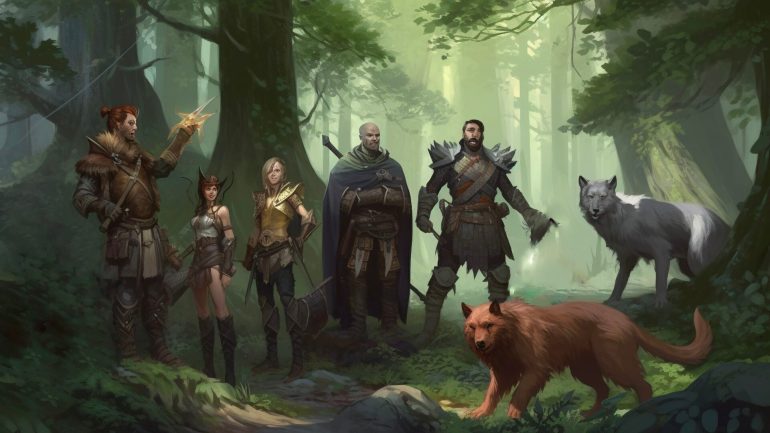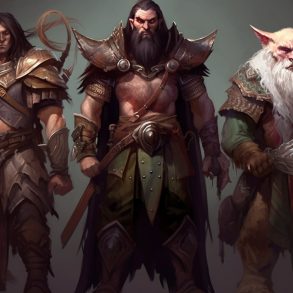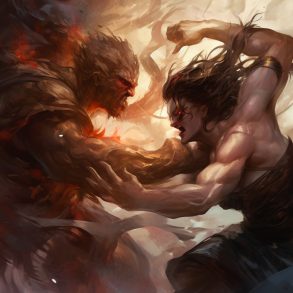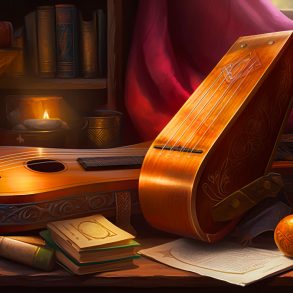A keen-eyed scout, a ferocious warrior of claw and fang, or simply a comforting companion in a dark and scary place: animal companions can bring a lot of function and emotion to your character. So how do you get one?
Let’s look over the various ways you can get yourself a steadfast animal companion in 5E:
Less permanent and DM-dependent
To start, we’ll cover the ways you could recruit a wild animal you meet into your party (and heart); these methods are less permanent and require more buy-in from your DM to work out.
Animal friendship
This 1st level spell is available to Bards, Druids, Rangers, Mark of Handling humans, and, (in a more limited form) Yuan-ti Purebloods. It allows you to charm a beast for 24 hours or until you or a party member harms it, which gives you a good start to calm a wild beast and show them you mean no harm. To have this on an ongoing basis would be a little costly on your spell slots, so strong roleplay (RP) during the charmed period is advised to win hearts instead of compelling minds. Word of caution, the animal will need an intelligence lower than 4 and to fail a Wisdom saving throw, which are often not a bad save on some animals.
Animal handling and RP
Far more table-dependent is the route of recruiting an animal companion without any feature or spell to say that you de-facto get them. By explaining how you are trying to entice, care for, and nurture a found animal, your DM may allow you to make skill checks (Animal Handling is fitting here, but a DM could ask you to use any skill and ability score they see fit) to convince the animal to stay and perhaps even train it. This may be easier with a pre-trained animal, such as a purchased mastiff (for protecting the horses) or mount.
Longer-lasting spells
Find Familiar
A prevalent 1st level ritual, this spell is available to Wizards, Pact of the Chain Warlocks, Druids (in a more limited form via TCoE optional rules), and everyone else via the Magic Initiate and Ritual Caster feats. It allows you to summon a spirit, taking the form of an animal of your choice (examples and restrictions are given in the spell text), that you can communicate telepathically with, see through the senses of, and even cast through within a limited range. This is great for getting yourself an owl, cat, bat, etc., but if you’d like a more exotic selection of creatures (with their interesting abilities), then you can choose to be a Pact of the Chain Warlock. This allows you to choose more exotic familiar forms, like a pseudodragon and imp, and empower your familiar further through the use of invocations.
Find Steed
Exclusive to Paladins, Find Steed is a 2nd level spell that allows you to summon a spirit to take on the form of an elk, warhorse, pony, camel, or mastiff (though your DM may let you summon others, perhaps with the help of some sacrificial snacks). The steed, once summoned, has an intelligence of 6 (no matter what creature you chose, a significant improvement), can communicate with you telepathically within a mile, and while you’re mounted on them, can share the benefits of a spell you cast that only targets yourself. This is a great way to get a larger companion or add a more intelligent hound to your PC for dungeon delving. At higher levels, you can use the 4th level version, Find Greater Steed, to summon more impressive creatures, like pegasi and rhinos.
Features
Beast Master Ranger
The first example that came to mind of many of you reading this article is that this subclass is all about taking your animal companion into combat. The PHB rules allow you to choose a CR1/4 creature that will obey your commands and receive some benefits and restrictions; if your animal companion falls in combat, you can summon a new one over 8 hours using a ritual. TCoE brought us some optional rules for the Ranger, including a new set of Beast Master options, however, which allow you to choose a template for the spirit you summon, describing what the companion looks like as you wish. These new options include some scaling based on your Ranger level and proficiency bonus to keep your companion competitive at higher levels.
Battle Smith Artificer
If you’re not the nature type, why not build your companion? The Battle Smith gives you the Steel Defender, a companion that can look like whatever you wish and be bipedal or quadrupedal. With built-in scaling as you level, the ability to heal them with the Mending cantrip, and the fantastic Defensive Pounce ability, the Steel Defender is an excellent option for an animal(ish) companion. Me? I have mine that looks like a mechanical steel panther. Why? Because it’s cool! There’s a band? I never heard of them.
Homunculus Servant (Artificer Infusion)
Keeping it magi-punk for this next entry, the Homunculus Servant is available to all Artificers as early as 2nd level (when they first get infusions). You’ll need to invest a pouch full of 100GP for the heart of your new friend, but with a fly speed and ranged attack, the Homunculus Servant is a great alternative to a creature like an owl. Like a familiar, you can channel certain spells through your Homunculus; however, be aware it has a much less generous HP formula than the Steel Defender.
Urchin Pet Mouse
Okay, you got me, technically this isn’t a feature, but I refuse to label Remy as starting equipment! There’s no special ability or mechanical connection here, but the Urchin background allows you to create the game with a pet mouse. You might even want to combine them with the listings at the top of the article to strengthen the bond between you two rag-tag adventurers.
There you have it, every way to get an animal(ish) companion in 5E! I hope you found this article helpful; please note Dice Cove and the author of this article are not liable for scratches and bites received from companions you make. This is your RP life now.






